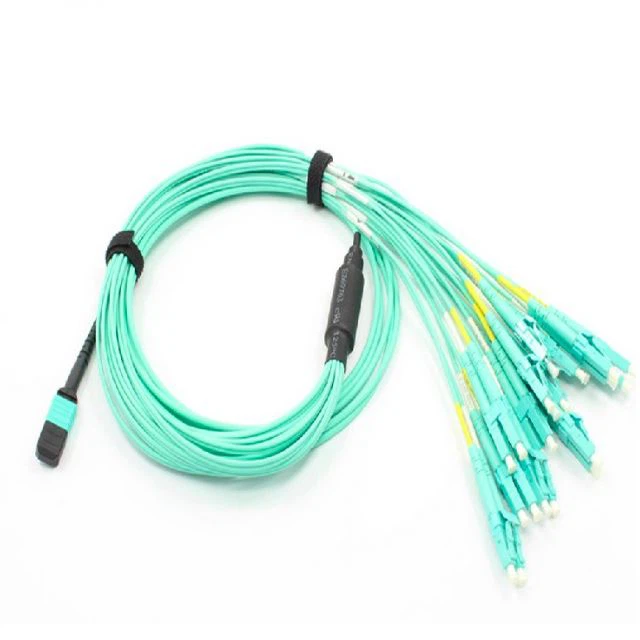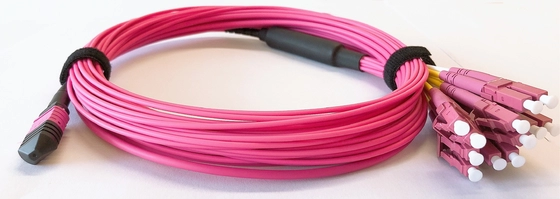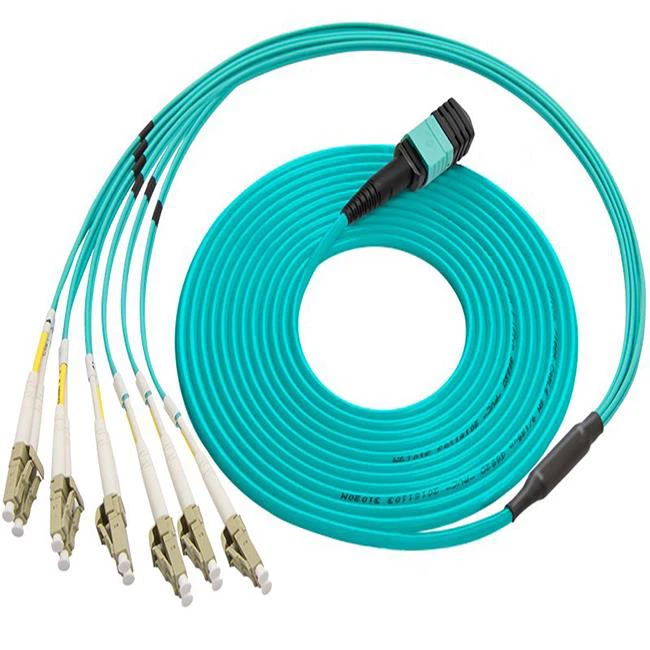Exploring the Advantages of Duplex and Branch Cable in Fiber Optic Networks

Fiber Optic Network Advancements
Importance of MPO LC Cable
Fiber optic networks have transformed the landscape of communication infrastructure, offering unparalleled speed and reliability. The integration of MPO LC cable, duplex, and branch cable has played a pivotal role in optimizing network performance. As the cornerstone of these advancements, the MPO connector facilitates high-density connectivity, enabling seamless data transmission across fiber optic cables. Furthermore, the LC cable ensures efficient and reliable data transfer within the network. Understanding the advantages of MPO LC cable is fundamental for designing and implementing robust fiber optic networks.
MPO LC Cable Overview
The MPO LC cable, also known as the multi-fiber push-on connector with a small form factor (SFF), is a crucial component in fiber optic networks. Its design and functionality contribute to the efficiency and reliability of data transmission within these networks.
High-Density Connectivity
MPO connectors provide high-density connectivity by allowing multiple fibers to be bundled together within a single connector. This enables efficient data transmission and optimizes the use of space within network infrastructure, making it ideal for high-capacity applications.
Bidirectional Data Transmission
Duplex cables, which are commonly used in conjunction with MPO connectors, facilitate bidirectional data transmission. This means that data can be sent and received simultaneously over the same fiber, enhancing network efficiency and throughput. The bidirectional capability of duplex cables is essential for maximizing the utilization of fiber optic resources and ensuring seamless communication within the network.
By incorporating MPO LC cables with their high-density connectivity and leveraging duplex cables for bidirectional data transmission, fiber optic networks can achieve optimal performance and reliability.
Enhancing Network Flexibility
Scalability and Flexibility
When it comes to enhancing the flexibility and scalability of fiber optic networks, branch cables play a crucial role. These specialized cables enable efficient network expansion by providing the necessary flexibility to accommodate growth and changes in network infrastructure. Branch cables allow for the seamless integration of additional components, such as connectors and splitters, without disrupting the existing network layout. This scalability ensures that fiber optic networks can adapt to evolving demands without requiring extensive reconfiguration or overhauls.
In addition to scalability, branch cables contribute to the overall flexibility of the network, allowing for versatile deployment options and configurations. Their design enables easy routing and organization of fibers within the network, providing a streamlined approach to managing connectivity. By integrating branch cables strategically, network administrators can optimize the layout and design of fiber optic networks to meet specific performance and operational requirements.
The incorporation of branch cables offers valuable insights into optimizing fiber optic network performance and reliability. Their role in enhancing both scalability and flexibility is instrumental in ensuring that networks can adapt seamlessly to changing needs while maintaining high levels of efficiency.

Optimizing Network Performance
Understanding the advantages of using both duplex and branch cables provides critical insights into optimizing fiber optic network performance and reliability. The combination of bidirectional data transmission enabled by duplex cables with the scalability and flexibility offered by branch cables creates a robust foundation for maximizing network efficiency. By leveraging these cable types effectively, network operators can achieve an optimal balance between performance, scalability, and reliability within their fiber optic infrastructure.
The strategic utilization of these cable technologies empowers organizations to build resilient networks capable of meeting current demands while accommodating future growth. This proactive approach not only enhances operational efficiency but also ensures that fiber optic networks remain adaptable in dynamic environments.
Maximizing Network Reliability
Reliability of Fiber Optic Networks
Ensuring the reliability of fiber optic networks is paramount to their efficient operation and performance. Fiber optic networks form the backbone of modern communication infrastructure, supporting a wide range of applications, from internet connectivity to data transmission. The reliability of these networks directly impacts the seamless flow of information and the overall user experience.
To maximize network reliability, it is essential to implement robust design principles and utilize components that offer high levels of resilience. Fiber optic cables, including MPO LC cable, duplex, and branch cable, play a crucial role in maintaining network integrity and minimizing the risk of disruptions. Their durability and efficiency contribute to the overall reliability of the network infrastructure.
In addition to cable components, regular maintenance and monitoring procedures are vital for upholding network reliability. Proactive measures such as routine inspections, testing for signal integrity, and addressing any potential points of failure are instrumental in ensuring consistent performance.
By prioritizing reliability through meticulous design considerations and proactive maintenance practices, fiber optic networks can consistently deliver optimal performance while minimizing downtime and service interruptions.
Optimizing Performance
Optimizing the performance of fiber optic networks involves a comprehensive approach that encompasses various elements, including hardware components, network architecture, and operational practices. The benefits offered by MPO LC cable, duplex, and branch cable contribute significantly to enhancing network performance.
Efficient data transmission facilitated by MPO LC cables ensures that critical information reaches its destination swiftly and accurately. Moreover, leveraging duplex cables for bidirectional data transmission optimizes the utilization of available resources within the network. The integration of branch cables further enhances performance by enabling seamless scalability without compromising existing operations.
Furthermore, optimizing network performance involves leveraging technological advancements such as signal amplification techniques and advanced routing protocols to minimize latency and maximize throughput.
By understanding the advantages of these cable types within fiber optic networks, organizations can proactively enhance their infrastructure's capabilities while meeting evolving demands with confidence.

Advancing Fiber Optic Networks
Evolving Network Capabilities
Fiber optic networks continue to evolve, driven by the advantages of duplex and branch cable in optimizing network performance and reliability. The seamless integration of these cable types empowers organizations to enhance the capabilities of their fiber optic networks, ensuring efficient data transmission and scalability. By embracing these advancements, businesses can stay ahead of evolving demands and maintain a competitive edge in the realm of modern communication infrastructure.
See Also
Maximize Outdoor Fiber Patch Cable Performance with LC Type Connectors
2024 Future Developments in Single Mode Optical Fiber Technology
Understanding the Applications of Singlemode ADSS Cable in Telecommunications
Understanding Prodigy Fiber-to-the-Home Hardened Connectivity for High-Speed Internet
Exploring Options for Singlemode Round Drop Cable Quick Connectors in Outdoor Settings
About US
Follow Us
AnetFiber company's main products are indoor and outdoor optical fiber cables, outdoor waterproof pre-connected fiber-to-the-home products, PLC optical fiber splitters, optical fiber jumpers and pigtails, MTP®/MPO high-density big data product solutions, optical fiber field quick connectors and research and development molding, injection molding and production of optical fiber distribution boxes, optical fiber chassis cabinets, the market has expanded to the world, Europe, America, Asia, the Middle East and Latin America.
Address
Shenzhen City, Baoan District, Yanluo Street, Tangxiayong Community, Yangyong Industrial Road, Tonggangda New Energy Vehicle Park 406
Contacts
+86 199 2655 3586

